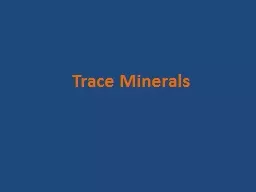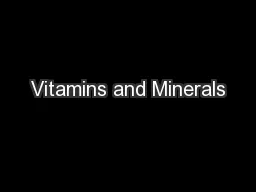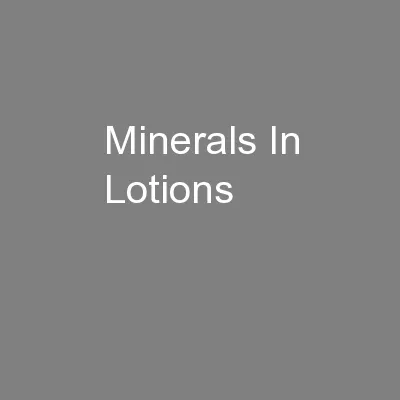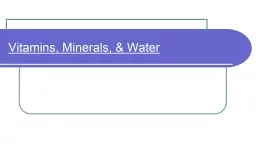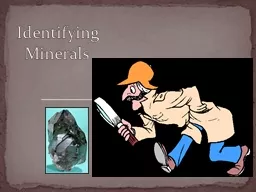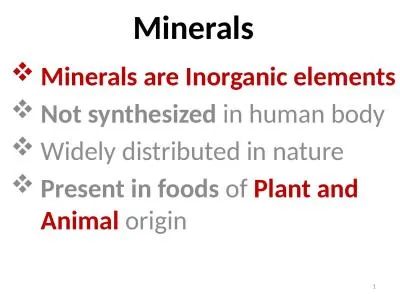PPT-Trace Minerals Zinc Functions of Zinc:
Author : dorothy | Published Date : 2022-06-07
An essential component of many enzymes Involved in protein and DNA synthesis Important for normal spermatogenesis and embryonic development Zinc Sources and daily
Presentation Embed Code
Download Presentation
Download Presentation The PPT/PDF document "Trace Minerals Zinc Functions of Zinc:" is the property of its rightful owner. Permission is granted to download and print the materials on this website for personal, non-commercial use only, and to display it on your personal computer provided you do not modify the materials and that you retain all copyright notices contained in the materials. By downloading content from our website, you accept the terms of this agreement.
Trace Minerals Zinc Functions of Zinc:: Transcript
Download Rules Of Document
"Trace Minerals Zinc Functions of Zinc:"The content belongs to its owner. You may download and print it for personal use, without modification, and keep all copyright notices. By downloading, you agree to these terms.
Related Documents

